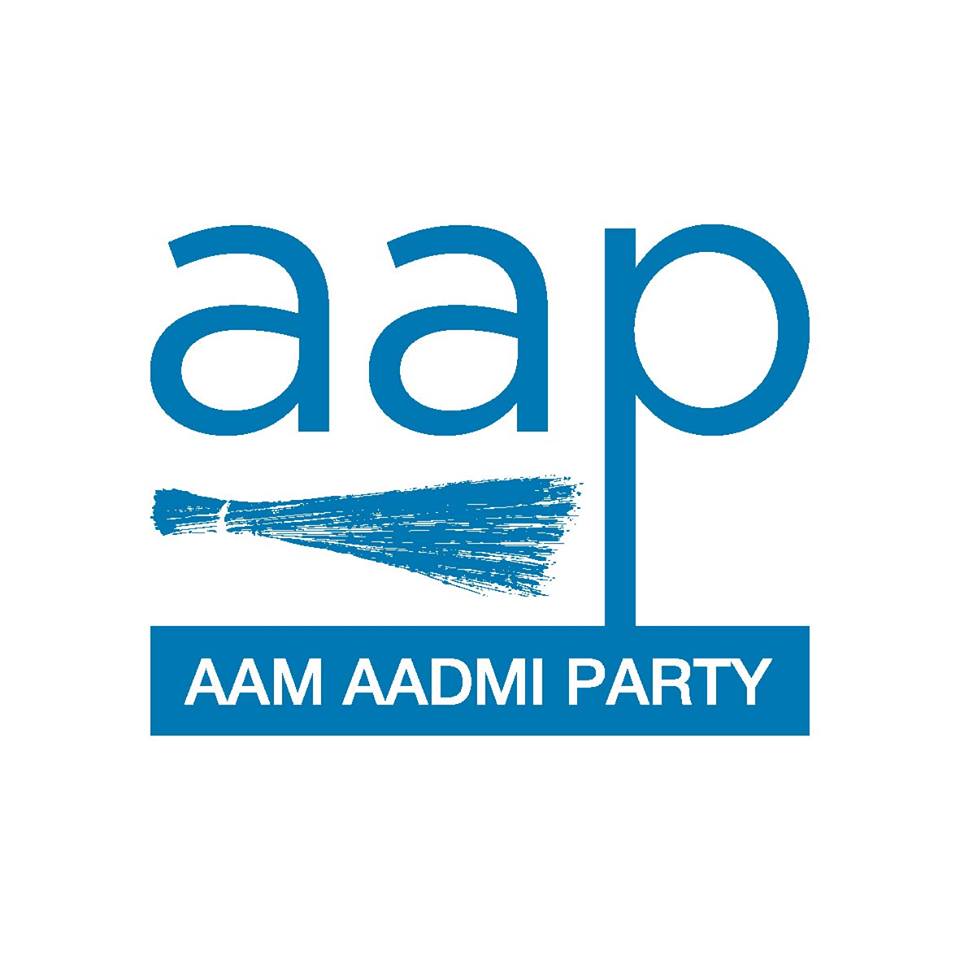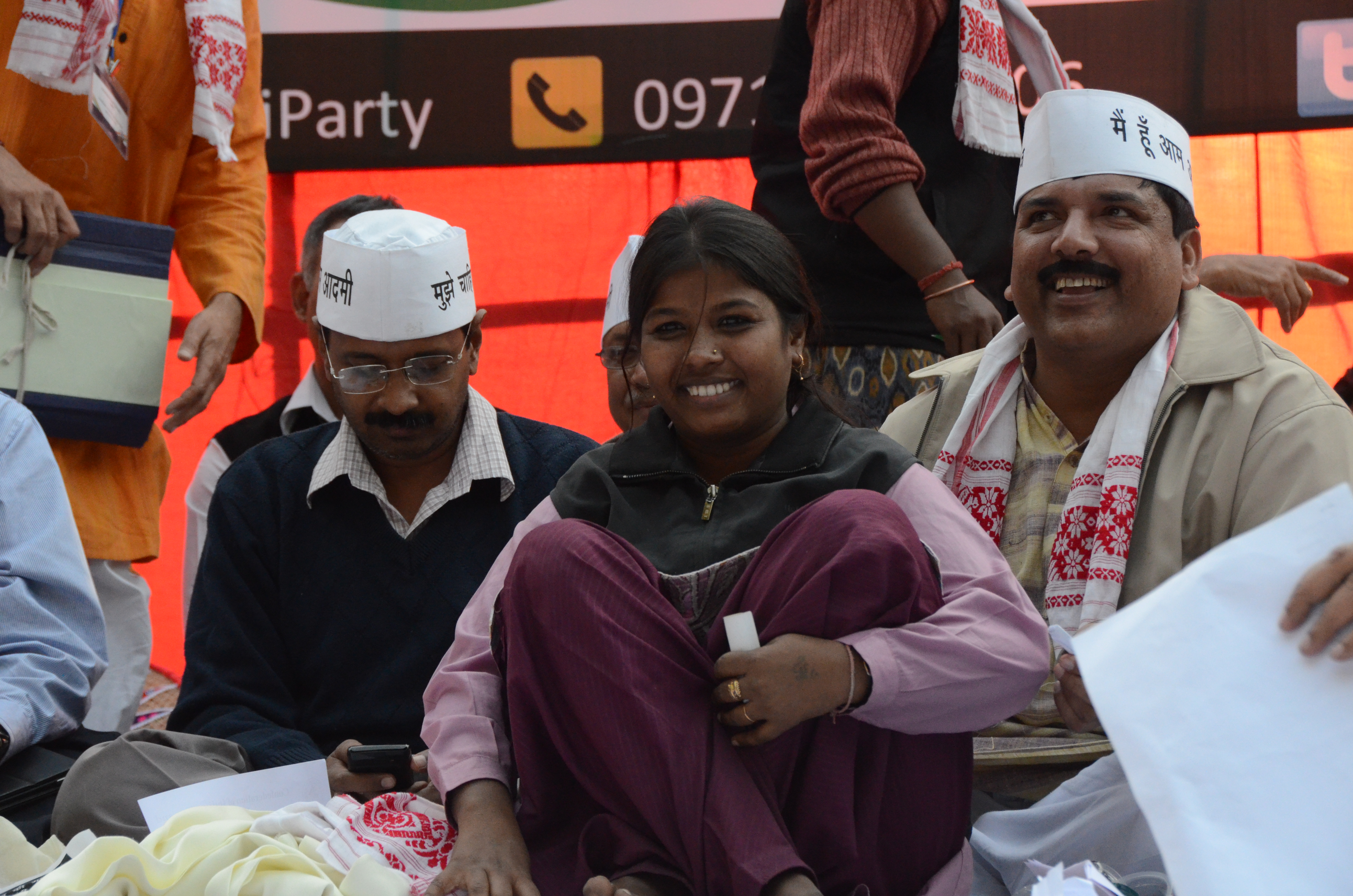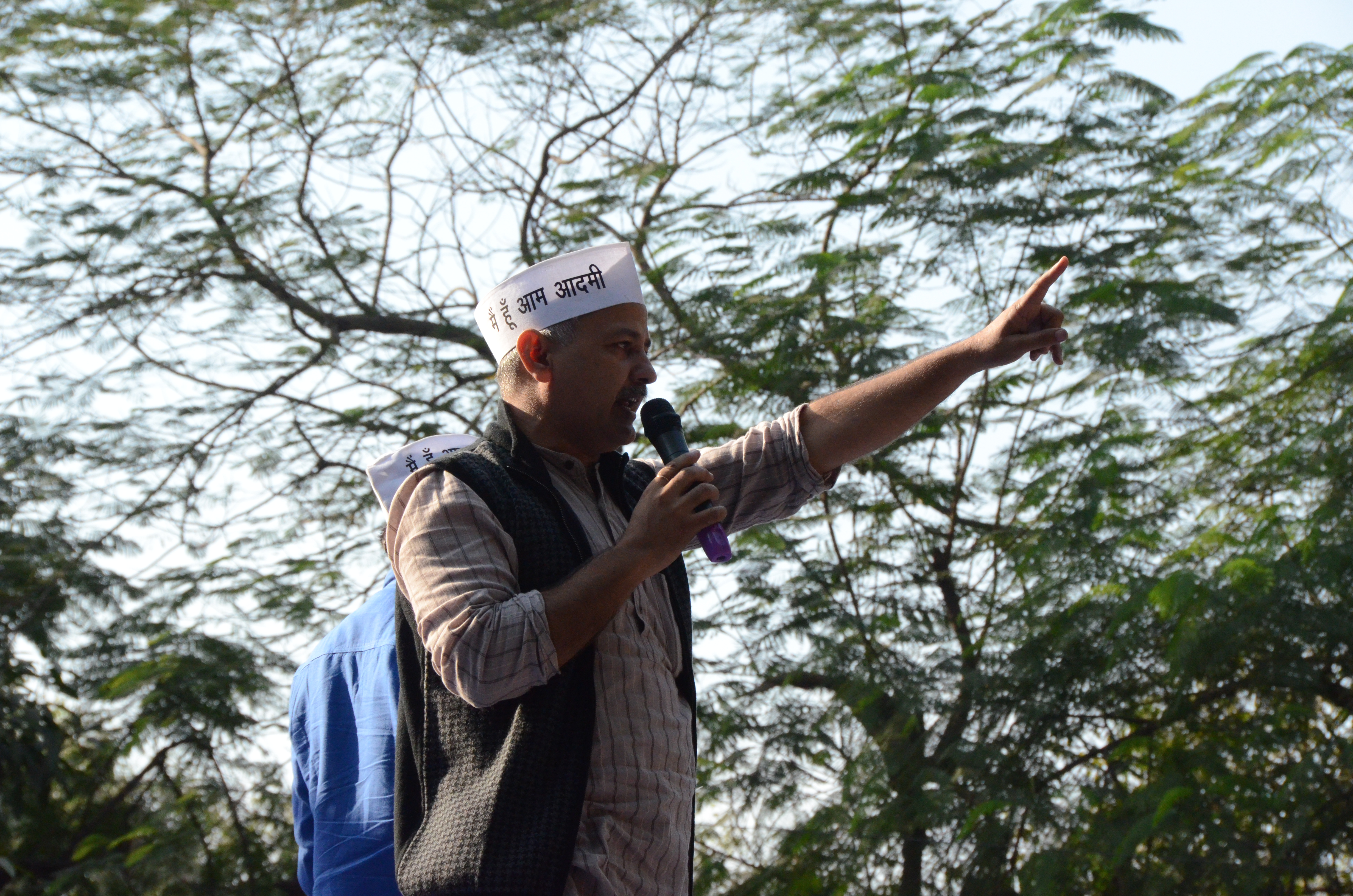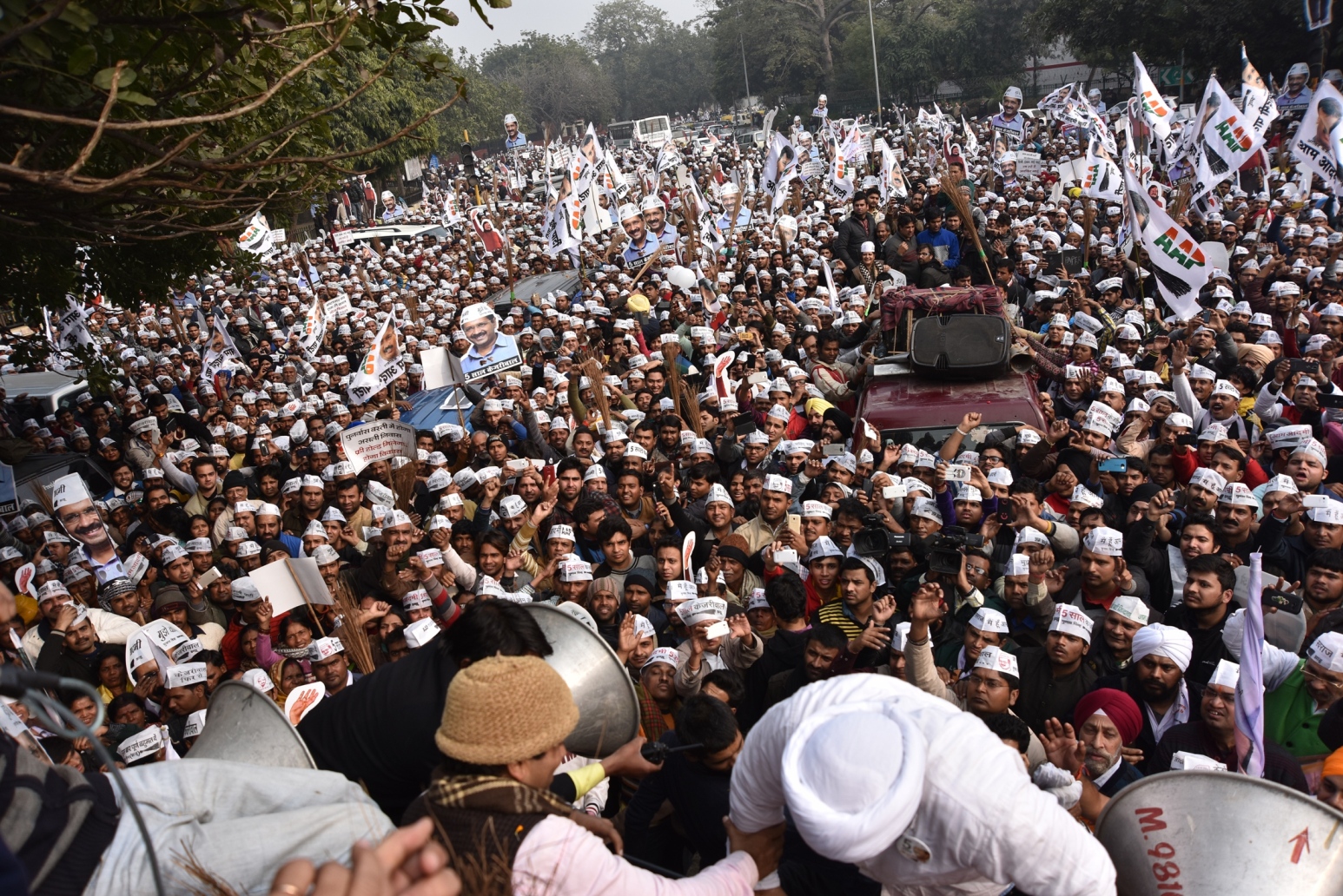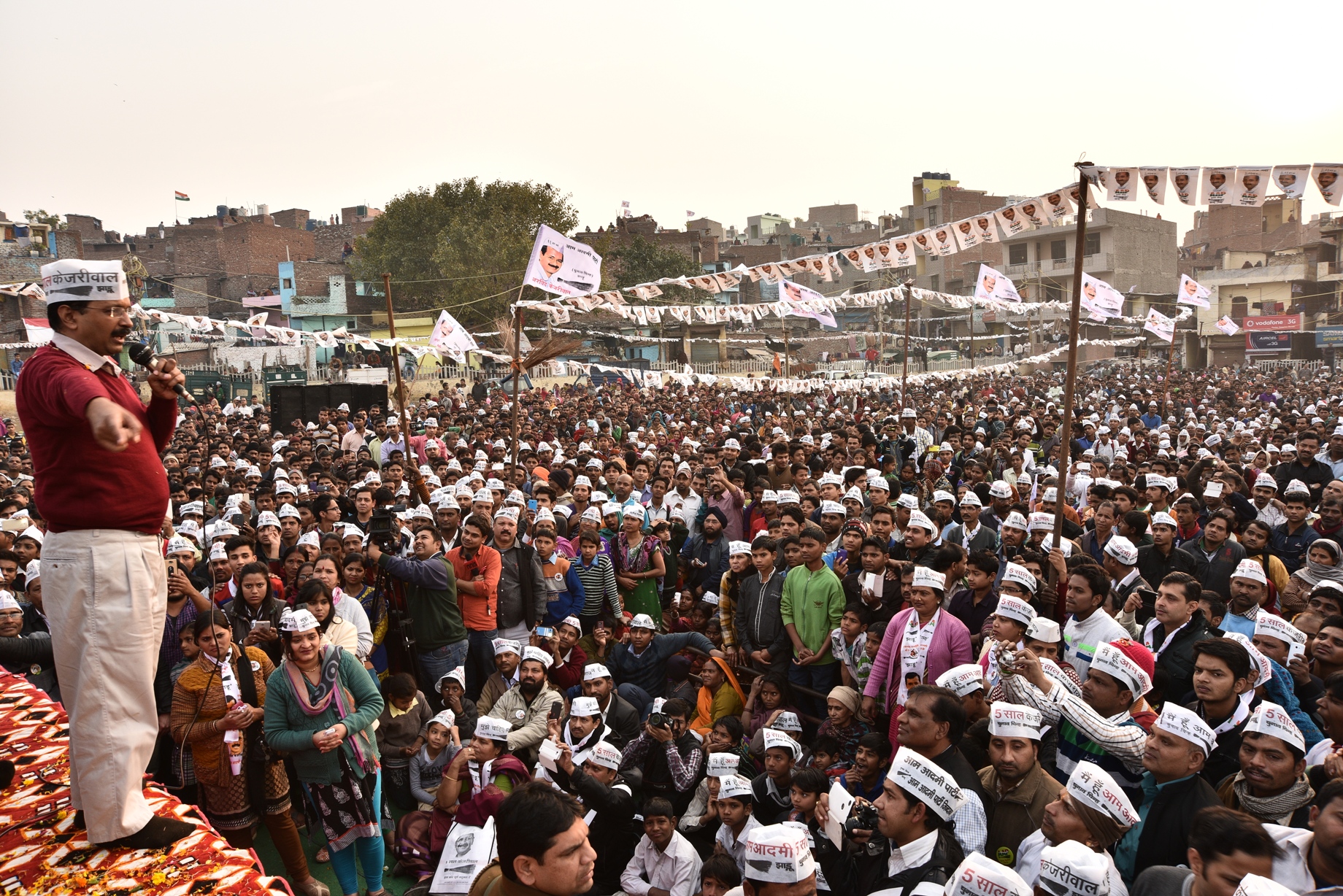In April 2011, a civil society movement was born in the backdrop of big ticket corruption scandals that came to light during the Congress-led UPA regime. A group of activists from varied backgrounds had come together to demand the enactment of the Jan Lokpal Bill – a legislation that had been stuck in Parliamentary committees for decades. With public anger against corruption building up with every expose that came from the news media, the demand for a strong law that could deal with a corrupt political establishment found widespread support among ordinary Indians. Under the banner of India Against Corruption, Indians rose up in protest against the government of the day, demanding the Jan Lokpal be passed immediately.
Spanning over two years, across hundreds of cities, towns and villages, lakhs of people mobilised themselves for this cause. Protest marches, gheraos of politicians, social media campaigns – a revolution had begun. Led by social activist Anna Hazare, thousands of people in several locations sat on fasts on three separate occasions to build support for the Jan Lokpal Bill, and pressure the government into acting on people’s demand. At the end of the third and final fast, despite all efforts of the IAC, the Parliament had still not come around to passing the Jan Lokpal.
The failure of the government to agree to the people’s demands was the result of the deeply entrenched corruption that had decayed India’s political establishment. A Jan Lokpal was directly detrimental to the interests of the political parties and their leaders. That’s when one section of IAC activists, led by Arvind Kejriwal, decided that the only way to rid this country of corruption was to join politics, enter government and clean up the system from within. Thus began the journey of the anti-corruption protest towards the political revolution called the Aam Aadmi Party.
2012 – Birth of a Political Revolution
The birth of the AAP on 2nd October, 2012 was a watershed moment in India’s political history. It suddenly opened the doors for common citizens, who had been watching the decline of the country’s politics and governance from the sidelines, to become a part of a political party. There were no barriers to entry that had caused traditional political outfits to become family fiefdoms or communal organisations. Women and men, old and young, poor and rich – all were welcome as aam aurats and aam aadmis in this new party. The AAP pioneered the crowd-sourced model of electoral fundraising in India with small donations running the party right from the beginning. With the promise to end corruption from the system and put forth a model of alternative politics, the AAP made its grand entry.
The first election AAP decided to contest was the Delhi Assembly election of December, 2013.
Party Launch 2012
2013 – Bijli Paani Andolan
The first issue the AAP took up in Delhi in the run up to the Assembly election was of fraudulently inflated electricity rates and water bills. The AAP launched an agitation against the ruling Congress government, against its collusion with power distribution companies and the water tanker mafia. From 23rd March onwards, Arvind Kejriwal began a fast to build pressure on the Sheila Dikshit government. Simultaneously, the party initiated a massive signature campaign to organise support for the cause. On the 14th day, Kejriwal broke his fast, after the party had handed over more than 10.5 lakh petitions from the people of Delhi to then Chief Minister Sheila Dikshit. This agitation catapulted AAP into a political force that could take on the powerful political class on behalf of the people.
2013 – AAP’s debut shakes up the political class
On the back of a surge of popular support, the AAP made a spectacular debut by winning 28 (out of 70) seats in the Delhi Assembly. Dismissed by mainstream political parties, political pundits and the news media as a minor player, the AAP scored what is now considered one of the biggest political upsets of all time. Not only had AAP reduced the incumbent Congress party to a mere 8 seats from the 43 it had won in 2008, Arvind Kejriwal had also defeated three-time Chief Minister Sheila Dikshit from New Delhi constituency by a record margin. The AAP had shaken up the political class by contesting elections without the backing of big money and muscle power. It had fought an issue-based campaign, shunning traditional politics of caste and religion. After consulting the people of Delhi on government formation, the party formed a minority government with Arvind Kejriwal as Chief Minister on 28th December, 2013.
2014 – Lok Sabha elections
After failing to pass the Jan Lokpal Bill due to a lack of numbers in the Delhi Assembly, the AAP government resigned in February 2014 to seek a fresh and full mandate. However, before the re-election in Delhi could be held, the Lok Sabha elections were scheduled in April and May 2014. AAP contested on over 400 seats, and secured 4 seats – all from the state of Punjab. While the result did fall short of the expectations people had from the party, it was a strong debut in Punjab, the second state after Delhi where AAP registered a victory.
2015 – A Landslide Victory In Delhi
Despite losing all seven Lok Sabha seats in Delhi in the 2014 Lok Sabha elections, the AAP was quickly back on its feet, launching a mass contact programme to demand that elections be held in Delhi. The party took the achievements of its 49-day government to the people of Delhi, promising to end corruption once more if re-elected. This time, the party’s clarion call was “Paanch Saal Kejriwal” – promising that the Kejriwal-led AAP government will complete its tenure. The winter of 2014-15 saw the birth of the ‘Mufflerman’, a nickname for the muffler-clad anti-corruption crusader of Delhi. The frenzy of support for the AAP across all caste, class and religious divides had set the context for a decisive victory against the BJP, which had swept the Lok Sabha elections only a few months back. The final tally sent shockwaves around the country. In what was called a miraculous performance, the AAP had won 67 out of 70 seats in the Delhi Assembly, with a record vote share of 54%. A party that was born less than two years before the historic election of 2015 had cemented its place on the political map of India.
Delhi Elections 2015

